A water heater is an essential appliance in any home, providing hot water for showers, cleaning, and cooking.
However, many homeowners are unsure whether their water heater should be on pilot or continuously. It can be a confusing decision, as both options have their pros and cons.
Whether you’re a homeowner looking to save on energy costs or just curious about the best way to operate your water heater, this guide will equip you with everything you need to know.
It can be a confusing decision, as both options have their pros and cons. In this guide, we will discuss the differences between leaving your water heater on pilot or on continuously, including the benefits and drawbacks of each option.
It is recommended that you set the water heater to “pilot.” To avoid condensation and dampness in your house, keep the heater running as normal if your water heater is also your central heating boiler.
Leave the thermostat set to 20 degrees C for your vacation if you usually heat your house to tropical temperatures and run around in shorts; empty houses don’t need to be overheated; just enough temperature to prevent condensation will do.
For myself, if I don’t use the gas appliance for more than a week, I turn off the pilot and relight it when I need it.
Summer is the worst time to use gas fireplaces, especially those that aren’t used. In this case, only two fireplaces that are not in use save money on the bill.
What is a Pilot Light? What Does it Do?
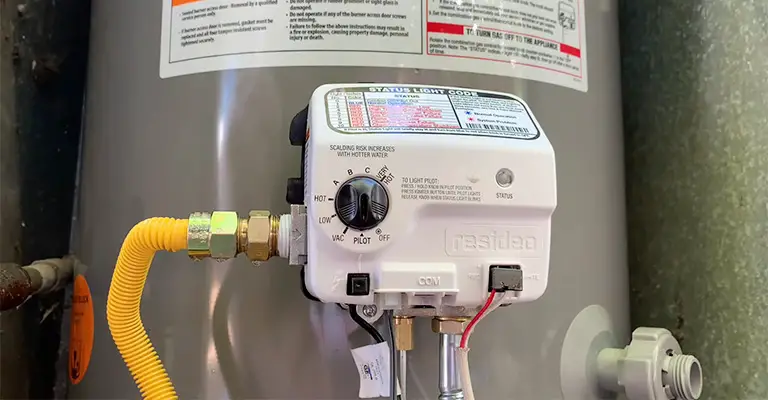
A small flame ignites a gas or propane burner on a water heater. Pilot lights remain lit at all times and are the minor flames in our world.
Water heaters ignite the gas burner with the pilot light’s assistance when they heat water within the tank.
You can think of the pilot light as a match. When you want to light a fire or gas stove, you will strike a match. In the absence of a match, you won’t be able to light a fire or fire up a gas stove. Pilot lights function similarly.
It is important to remember that when the pilot light in your water heater goes out, your water heater will not be able to ignite the gas burner, which means that the water will not be heated.
Your first clue that your pilot lights out usually comes when you discover that you don’t have hot water.
However, once the pilot light is relit, water heaters can ignite their gas burners and produce hot water once more.
How to Set Your Water Heater to Vacation Mode and Turn It Back
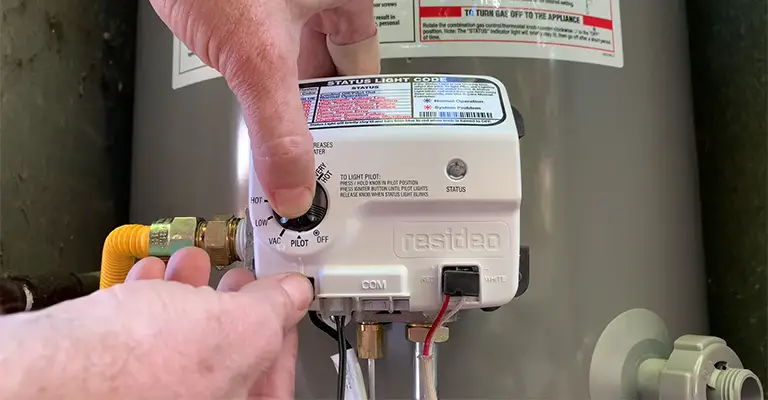
There is a great deal of energy involved in operating water heating systems.
Therefore, more and more people who are environmentally conscious (or who just want to lower their bills) are learning how to save energy by putting their water heaters on vacation mode.
Water Heater Vacation Mode: What Is It?
You can save energy by operating your boiler at lower temperatures in vacation mode on your water heater system.
A manufacturer usually sets vacation mode to 50° F, a temperature well below the amount needed to heat your house but hot enough to avoid water freezing while you are away.
There are some systems that do not require you to change the manufacturer settings. An adjustment dial allows you to adjust the temperature of the water.
It is still essential to reduce the activity of your water heater, cut down on your energy bills, and keep your pipes from freezing.
Where Do You Find Vacation Mode, And How Do You Use It?
You can put your water heater into vacation mode in many ways, the most common being with a specific setting on the thermostat.
See if your thermostat has a vacation mode by scrolling through its menu. Select that option, and the system will handle everything else.
It’s possible to manually set your thermostat to “Pilot” mode without a vacation mode specified on your thermostat and leave it there until you return in the absence of one.
Why You Should Put Your Water Heater In Vacation Mode
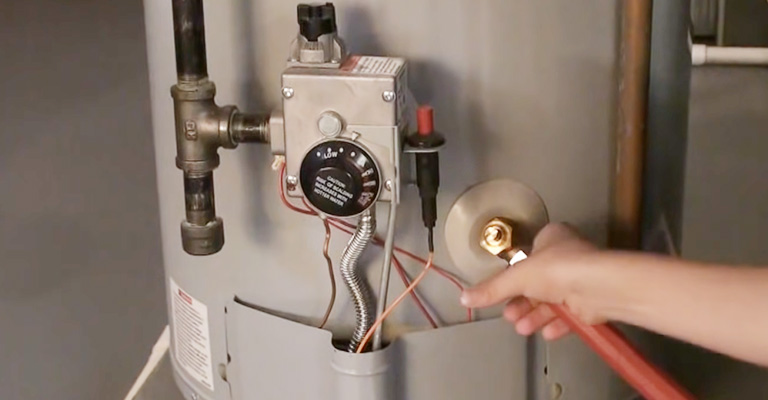
It is primarily important to save money by putting your water heater on vacation. Water will serve no purpose if you don’t use it, so it’s not worth heating to 120 degrees. A waste of energy will increase your energy bills without any benefit.
Also, during prolonged periods of cold weather, you might want to prevent your pipes from being damaged by freezing water.
Turning off your water heater while you are away can lead to cracks, damaged plumbing, and the need to replace your whole system if the water freezes in the system.
It leads to leaks when ice thaws because it damages the surrounding piping as it expands.
Your system will not work when you turn it back on again, leading to unfortunate flooding in your home. By setting your water heater to “Pilot” or “Vacation” mode, you can save energy while also protecting it.
In order to avoid extensive damage to your system, we compromise by using a bit of power and a little heat.
Therefore, vacation mode is one of the essential features of your water heater. Even if your thermostat doesn’t include a vacation mode, you can still reduce the temperature to protect your home.
Can I Turn Off My Pilot Light?
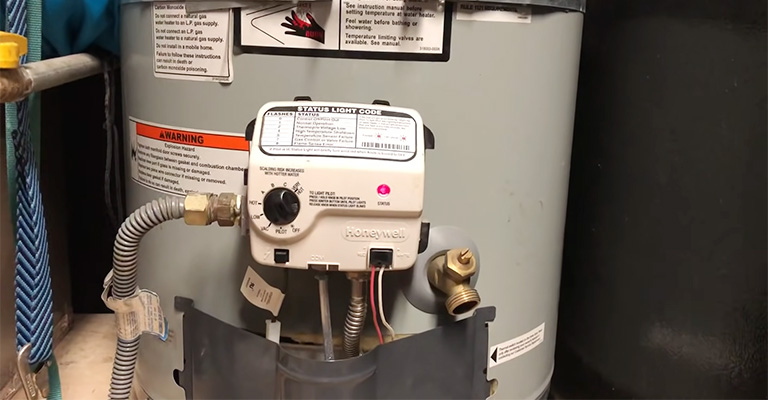
You shouldn’t worry about turning off your water heater’s pilot light in general. Nevertheless, you won’t have access to hot water once the tank reaches room temperature.
There are some situations when turning off your pilot light is a good idea. When you go on vacation, experts usually recommend doing this.
Keeping your water heater’s pilot light off while you’re away will save you money on your energy bill since the heater won’t keep the water warm.
It is preferable to turn the pilot light on instead of completely turning it off on some homeowners’ water heaters.
You won’t need to relight the pilot when you return to the house, so although the heater will still use gas to keep the pilot lit, you’ll have less hassle setting it up when you find yourself in the house again.
How to Relight the Pilot Light: Step-by-Step
Things You’ll Need:
- Flashlight
- Long barbecue lighter
- Screwdriver
Step 1: Turn Off the Gas
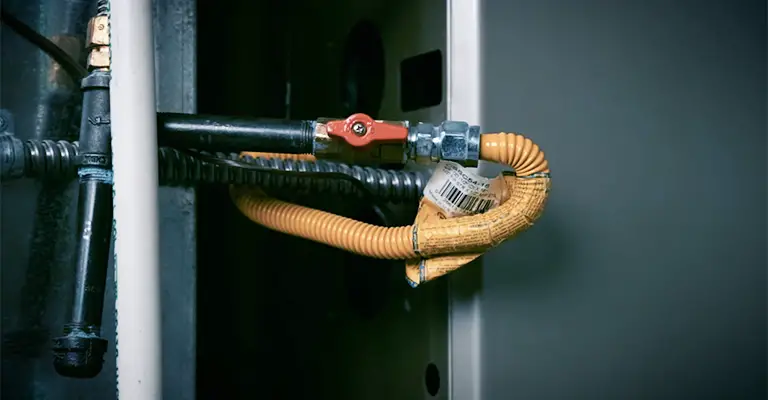
The knob of the gas regulator has markings around its base saying ‘On,’ ‘Pilot,’ and ‘Off.’ Gas control valves are rectangular boxes with gas and electrical lines connected to them on the front of your water heater.
The knob will generally be on top of them. Wait 10 minutes for any residual gas to dissipate, and then turn the knob’s indicator dial to ‘Off.’
Step 2: Access the Pilot
In most water heaters, the pilot is located near the gas control valve below the rectangular access panel at the base. If there are any screws holding the panel in place, remove them by lifting them off its mounting tabs.
Using a flashlight, find the pilot in the exposed cavity once the panel has been removed. To connect it to the gas line, two small lines will be provided.
Step 3: Turn Regulator Knob to ‘Pilot’
Set the indicator dial to ‘Pilot’ on the regulator knob. Light the pilot with a nozzle by pressing down on the knob.
Step 4: Light the Pilot
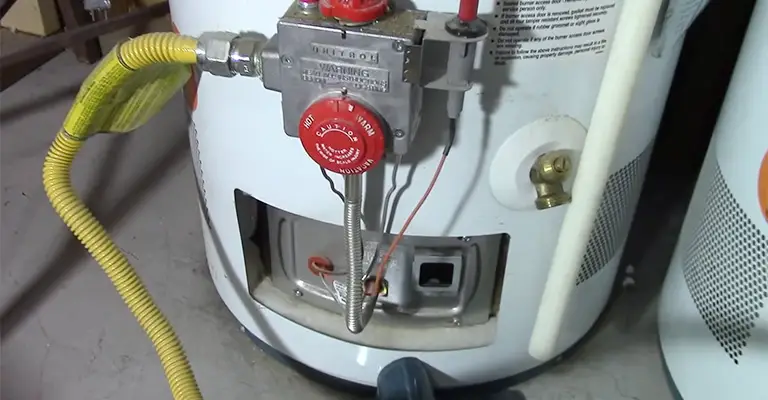
Your water heater’s age will significantly determine the method you use to ignite the pilot light. An older water heater must be manually lit with a flame to operate the pilot light.
Electronic ignition is used in the latest versions of water heaters to light the pilot with the touch of a button. Indicators on water heater control valves will indicate whether their igniter button uses electronic ignition or not.
Manual Lighting
If you need to manually light your water heater, hold the lit end of a long grill lighter up to the pilot while holding the regulator knob down. Remove the lighter after, the lighter ignites. Hold it up to the pilot until it ignites.
Electronic Lighting
When electronic ignition is enabled, hold down the regulator knob while pressing the igniter button repeatedly. When the indicator light turns on, you know the pilot is lit. Continue pressing the igniter button until the light is on.
Step 5: Test
As soon as the pilot is lit, keep holding the knob down for 90 seconds to clear the gas line of air and warm up the heat sensor.
Monitor the pilot light to ensure it does not go out while slowly releasing the regulator knob. After about 10 minutes, retry the ignition if the pilot goes out.
The underlying cause of your water heater’s failure may require professional inspection and repair if it won’t stay lit or continues to go out after repeated attempts to relight it.
Final Words
For any further assistance with your water heater, work with a professional so that you can get your system back up and running.







